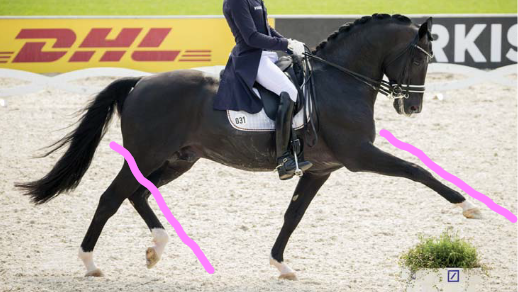Lois Lame
Well-Known Member
It sounds like you are talking about coming behind the bit - an evasion.My little horse was just a sparky girl and obviously not a dressage horse but on a more serious note (as I was joking before) I think unless a horse was being held BTV for the whole test it wouldn’t be fair to one that maybe comes behind the vertical occasionally with no force from the rider.. there are many other things that are easier , like a square, still, halt or flashy mover being marked highly while fluffing changes etc . Or uneven steps in piaffe by a flashy being marked higher when a correct piaffe from an average mover hardly gets a 6. Or extended trot with extravagant fronts and shuffling hinds , all very easy to see the wrong things or at least the things I feel are wrong… it’s in the hands of the judges and it would be good if they explained how they come to their marks

